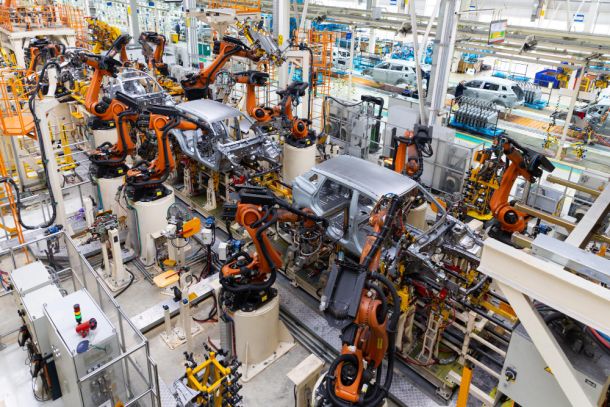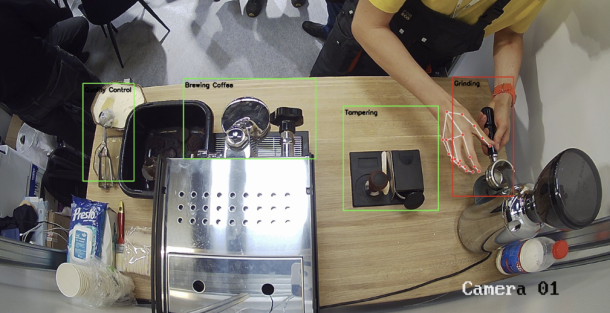Six Big Losses In Lean Manufacturing
6 Big Losses in Lean Manufacturing. What are they?
Traditionally among Six Big Losses which are to be minimized they name Equipment Failure, Setup and Adjustments, Idling and Minor Stops, Reduced Speed, Process Defects, as well as Reduced Yield. The Six Big Losses are means of categorizing the various kinds of equipment-related losses. They fall into 3 categories: availability, performance, and quality.
Let’s name them one by one.
Availability: Unplanned stops
Unplanned stops materialize when equipment is not working due to breakdowns, maintenance activities, or failures which appear within time that is scheduled for production.
Availability: Planned stops
Planned stops are the reverse. These consists of scheduled downtime for maintenance, changeovers, cleaning, and so on.
Performance: Small stops
A small stop denotes the situation when equipment shuts down for a period lower than 10 minutes. They are often quite persistent and may take place multiple times a day.
Performance: Slow cycles
This kind of loss arises when a machine runs at a slower speed compared to its perfect cycle time. This could happen due to inadequate CIL activities or maintenance.
Quality: Production rejects
This is a quality loss. It is presented in the form of scrapped parts generated throughout the production process or parts that must be reworked.
Quality: Startup rejects
And eventually, startup loss results in scrapped or reworked parts. These losses happen after any equipment startup or after changeovers.
How to Minimize Six Big Losses? Benefits of Utilizing Six Big Losses
One of the ways to reduce unplanned stops is to empower your operators to carry out cleaning, inspection, and lubrication (CIL) tasks, as well as other small maintenance activities, independently.

Therefore, connected worker platforms include mobile-enabled knowledge management systems which workers are able to easily access on the shop floor.
Minimize defects with thorough, interactive work instructions
A worker could easily accidentally skip a small step while starting up a machine. Nonetheless, these mishaps might lead to insufficient product quality, costing you both time and materials.
Connected worker platforms are developed to bring forth task management tools that let you easily schedule planned checkups and CIL tasks. When a job is due, the app automatically notifies relevant workers. It helps them to fix the issue quickly.
The platform further supports workers who receive interactive digital forms and step-by-step checklists, that are accompanied by images and videos, to aid the operator in completing each procedure correctly. It is also useful to create a simple Six Big Loss Rulebook. It should be uniformly applied across your company to ensure that every team can measure loss consistently.
Team Member Roles
4 major roles in any Lean program are Sponsor, Facilitator, Leader and Team. At the same time Six Sigma team formation usually consists of stakeholders, executives, champions, and team members (yellow belts) who are led by a green belt or black belt. Project level membership could include master black belts; black belts; green belts, or yellow belts who are helping in management of the improvement initiative.
Monitor the Constraint
The Theory of Constraints is a methodology used to identife the most vital limiting factor (in other words, constraint). It does not let to achieve a goal. And then by systematical improvement of that constraint until it is stops to be a limiting factor. In manufacturing, the constraint are often called bottlenecks.
The Theory of Constraints makes use of the scientific approach to improvement. It is thought that every complex system, including manufacturing processes, is a set of multiple linked activities, one of which is acting as a constraint upon the entire system.
What is the main goal of most manufacturing companies? It is to make a profit. It is a short term profit as well a as a long one. With the Theory of Constraints one has a powerful set of tools that help to achieve that goal, including:
- The Five Focusing Steps
- The Thinking Processes
- Throughput Accounting
Don't Hide Loss
Time that might be used for value-added production (i.e., manufacturing to meet customer need as opposed to manufacturing for inventory) should be used for value-added production. If not the time should be categorized as a loss. This strict standard drives innovation and improvement. Every loss can be targeted and improved.

This is the reason for many companies to choose to categorize breaks and meetings as Planned Stops. Plus they are also very careful to ensure that their Ideal Cycle Times are grounded on the fastest possible time to manufacture one piece.
Standardize Changeover Time Measurement
Measure changeover time precisely and consistently by standardizing the measurement. It is as a rule measured as the time between the last good part of the previous run to the first good part of the next run. You are able to define your own standard. It is important to be consistent.
Automate Data Capture
Automated data capture vividly improves measurement accuracy for Unplanned and Planned Stops. It is the only way to be able to accurately measure and differentiate losses from Slow Cycles and Small Stops.
A quick rule of thumb to set the threshold between an Unplanned Stop and a Small Stop is to define Unplanned Stops as long enough to require a reason to be logged. Then it is time to decide what that duration should be.
5 Common mistakes or seeming disadvantages of lean manufacturing:
Nonetheless lean manufacturing has many benefits, companies usually face some perils during implementation. We have collected 5 common mistakes manufacturers make while implementing lean principles and 5 ideas how to avoid them.
Lack of strategy. Operations leaders of an organization may take up lean manufacturing because they have heard about it during a seminar or it is a buzzword in their industry. They do it without having any objectives or aims other than implementing lean manufacturing. This could be counterproductive to the existing processes.
How to avoid: The what and why of lean manufacturing should be addressed before implementing it on the workshop floor. The objectives and expectations are to be well-defined both quantitatively and qualitatively. It is a must that implementation is following a detailed road map.
Once Coca-Cola has introduced lean principles into their processes, they have defined the problem. Then they used some quantitative techniques to measure and analyze the production metrics. They only were ready to go ahead with implementation after this detailed analysis.

Employee participation. One more common mistake also comes from the management side. They adopt a top-down approach while implementing lean manufacturing. This leads to a disconnect between the managerial aims and the goals of the employees. Lean principles are impossible to implement with a top-down approach. It is proved that such approaches will eventually fail.
How to avoid: Take employees in credence for successful lean implementation. Make them accept the what, why, and how of lean manufacturing. It is also helpful to help them with relevant workshops and training sessions.
Wrong KPIs. Factory operations as a rule have a plethora of metrics that are possible to track. Focusing on metrics which do not add value to the customer is a waste of time and resources. It often ends with more problems down the line, while reducing wastage of resources is necessary.
How to avoid: Noteworthy efforts should be made to identify the metrics that will give maximum benefit to customers. When the problem of a factory is defined as an excessive machinery breakdown, maintenance metrics must be tracked and predictive maintenance could become the way forward. Similarly, find out the right metric for the problems the specific factory faces.
Lean culture. During implementation, some managers tend to anticipate lean principles as some definite steps to be taken for process efficiency improvement. They do not take any effort beyond some prescribed steps. This can be a way for triumphant implementation of lean manufacturing.
How to avoid: Inculcate all the lean principles as part of company culture. This must reflect in all processes starting from employees hiring. These principles are used not just for the production division and ways to increase employee autonomy. They are applicable across the different organizational units. It is needed for fostering a lean culture within the company.
Intermittent improvement. Continuous improvement is one of the major tenets of lean manufacturing. But sometimes business leaders shun the principles as some objectives are met. It can eventually lead to degradation in processes and might be a step in the reverse direction.
How to avoid: The principle of continuous improvement is to be inculcated among the employees and management. In the cases when asset management was the problem that was to be addressed with lean principles, it should not stop with achieving just several goals. Constant efforts for asset tracking must be in place even after achieving the initial objective. Continuous efforts have to be introduced in order to improve asset management. Familiar approaches should be chosen regarding all the problems to be addressed by lean principles.












